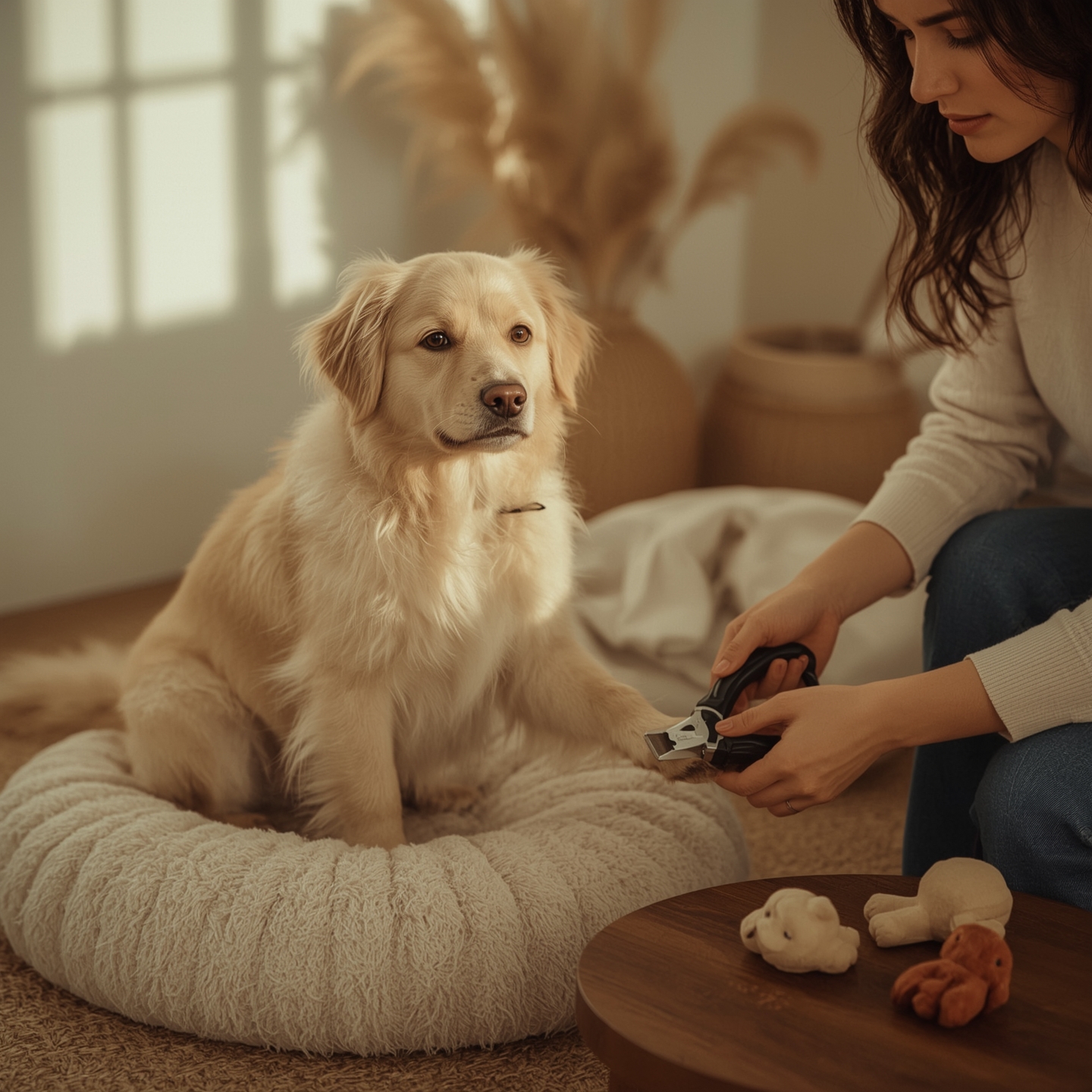Learn how to trim your dog’s nails without stress. Follow this simple, vet-approved step-by-step guide to keep your pup calm and safe.
How to Trim Your Dog’s Nails Without Stress: A Step-by-Step Guide
Keeping your dog’s nails trimmed is more than just a grooming routine — it’s essential for their comfort, health, and mobility. Long nails can cause pain, joint issues, and even injury. Yet, for many pet owners, trimming their dog’s nails is one of the most stressful grooming tasks. Don’t worry — with the right tools, techniques, and mindset, it’s totally manageable.
In this guide, you’ll learn everything you need to confidently trim your dog’s nails without stress for you or your furry friend.
Why Nail Trimming Is So Important
Before jumping into the how-to, let’s understand why regular nail trimming is crucial:
- Prevents pain and posture issues: Long nails force dogs to shift their posture, potentially causing joint pain.
- Reduces risk of injury: Overgrown nails can crack, split, or become embedded in paw pads.
- Improves traction: Trimmed nails help your dog maintain balance on slippery surfaces.
- Protects your floors and furniture: Short nails cause less scratching and damage.
Signs Your Dog Needs a Nail Trim
Most dogs should have their nails trimmed every 3–4 weeks. But each dog is different. Here’s how to tell if it’s time:
- You hear clicking on the floor.
- Nails curl or touch the ground when your dog stands.
- Your dog licks or bites at their paws frequently.
Tools You’ll Need
To trim your dog’s nails safely and effectively, gather these essentials:
- Dog nail clippers (guillotine or scissor-style)
- Styptic powder (to stop bleeding if you cut the quick)
- Nail file or grinder (for smoothing rough edges)
- Tasty treats (positive reinforcement!)
- Towel or non-slip mat (for comfort and control)
🛈 Pro tip: Use high-quality clippers with sharp blades — dull tools increase the risk of injury.
Step-by-Step Guide to Trimming Your Dog’s Nails
Step 1: Choose a Calm Environment
Pick a quiet room where your dog feels safe. Avoid distractions and loud noises. If possible, have another person help by gently holding or calming the dog.
Step 2: Get Your Dog Comfortable
Before even showing the clippers, handle your dog’s paws regularly to get them used to the sensation. Reward with treats and praise each time.
Step 3: Locate the Quick
The quick is the pink part inside the nail that contains blood vessels. In light-colored nails, it’s visible. In dark nails, trim gradually until you see a gray or white center — this means you’re close to the quick.
Never cut into the quick — it hurts and causes bleeding.
Step 4: Trim a Small Amount
Hold your dog’s paw gently but firmly. Position the clippers and trim a small bit of the nail at a time, starting from the tip. Take breaks between each nail if needed.
Use a 45-degree angle to mimic the natural curve of the nail.
Step 5: Use a Nail File or Grinder
After clipping, smooth out any rough or sharp edges with a file or grinder to prevent scratching and improve comfort.
Step 6: Reward Generously
Always praise and treat your dog after trimming each nail, even if you only do a few at a time. This builds a positive association and makes future sessions easier.
What If You Cut the Quick?
If bleeding occurs:
- Stay calm — your dog will sense your reaction.
- Press styptic powder or cornstarch onto the nail.
- Apply gentle pressure for a few minutes.
- Reassure your dog with soothing words and treats.
Avoid continuing the trimming session that day.
How to Make Nail Trimming Easier Over Time
- Start young: Puppies adjust quickly to paw handling and grooming.
- Regular practice: Handle their paws daily to reduce sensitivity.
- Gradual sessions: Trim just one or two nails at a time until your dog is comfortable.
- Use a grinder instead of clippers if your dog is sensitive to pressure.
Alternatives to DIY Trimming
If you or your dog are too anxious, consider:
- Professional groomers: Many offer nail trimming as a standalone service.
- Veterinary clinics: Especially useful for dogs with medical conditions or severe anxiety.
- Mobile groomers: Convenient for dogs who dislike travel.
Final Thoughts
Trimming your dog’s nails doesn’t have to be a battle. With patience, the right tools, and positive reinforcement, you can make it a stress-free routine that benefits both your dog’s health and your peace of mind.
Start small, go slow, and reward often — your pup will thank you with happy paws and a wagging tail.
Read More:
How to Care for Your Dog’s Paws


